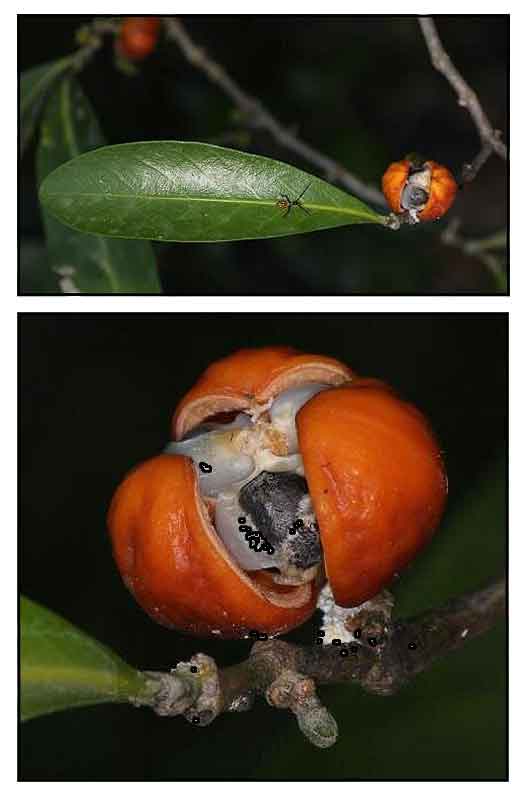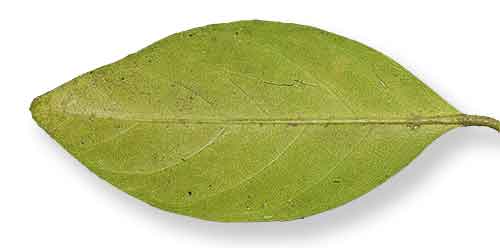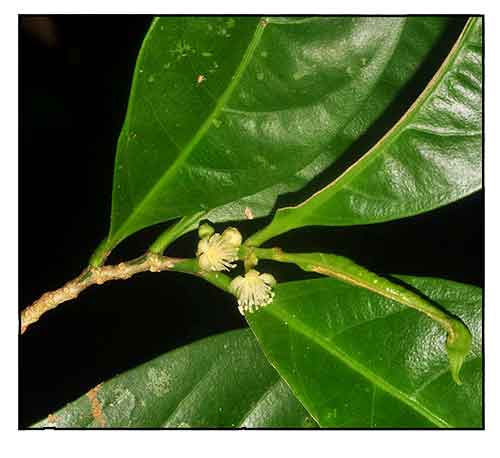
Family • Euphorbiaceae
Malaua
Suregada glomerulata (Blume) Baill.
SUREGARDA
| Scientific names | Common names |
| Erythrocarpus glomerulatus Blume | Malaua (Tag./Isabela) |
| Erythrocarpus spicatus Blume | Suregarda (Engl.) |
| Gelonium borneense Pax & K.Hoffm. | |
| Gelonium glomerulatum (Blume) Hassk. | |
| Gelonium glomerulatum f. montanum J.J.Sm. | |
| Gelonium meliocarpum Elmer | |
| Gelonium microcarpus Pax & K.Hoffm. | |
| Gelonium mindanense Elmer | |
| Gelonium papuanum Pax | |
| Gelonium philippinense Pax & K.Hoffm. | |
| Gelonium pulgarense Elmer | |
| Gelonium rubrum Ridl. | |
| Gelonium spicatum (Baill.) Hassk. | |
| Gelonium subglomerulatum Elmer | |
| Suregada borneensis (Pax & K.Hoffm.) Croizat | |
| Suregada meliocarpa (Elmer) Croizat | |
| Suregada microcarpa (Pax & K.Hoffm.) Croizat | |
| Suregada mindanaensis (Elmer) Croizat | |
| Suregada papuana (Pax) Croizat | |
| Suregada philippinensis (Pax & K.Hoffm.) Croizat | |
| Suregada pulgarensis (Elmer) Croizat | |
| Suregada rubra (Ridl.) Croizat | |
| Suregada spicata Baill. | |
| Suregada subglomerata (Elmer) Croizat | |
| Dovyalis macrodendron Gilg | |
| Gelonium glomerulatum Blume) Hassk. | |
| Suregada glomerulata is an accepted species. KEW: Plants of the World Online | |
| Other vernacular names |
| INDONESIA: Pialu. |
| MALAYSIA: Limau-limau, Penawar puteh. |
| THAILAND: Khan thong phayabat (central), Kraduk (peninsular), Maduk luem (northern). |
| VIETNAM: K[ej]n son ch[uj]m. |
Distribution Constituents Properties Availability |
May 2025
![]()
 |
| Â Â Â Â Â Â Â Â Â Â Â Â Â Â Â Â Â Â Â Â Â Â Â Â Â PHOTOS / ILLUSTRATIONS |
| IMAGE SOURCE: Suregada glomerulata / Suregarda / © Territory Native Plants / North Territory Government / Non-commercial use / Click on image or link to go to source page / TerritoryNativePlants.Au |
| OTHER IMAGE SOURCE: Euphorbiaceae : Suregada glomerulata / Abaxial view of leaf / Copyright © 2017 by P B Pelser & J F Barcelona (contact: pieter.pelser@canterbury.ac.nz) [ref. DOL118024] / Non-Commercial Use / Image modified / Click on image or link to go to source page / Phytoimages.siu.edu |
| OTHER IMAGE SOURCE: Euphorbiaceae : Suregada glomerulata / Flowering twig / Copyright © 2011 by Leonardo L Co [ref. DOL35286] / Non-Commercial Use / Image modified / Click on image or link to go to source page / Phytoimages.siu.edu |
Additional
Sources and Suggested Readings |
• |
DOI: It is not uncommon for links on studies/sources to change. Copying and pasting the information on the search window or using the DOI (if available) will often redirect to the new link page. (Citing and Using a (DOI) Digital Object Identifier) |
| Â Â Â Â Â Â Â Â Â Â Â Â Â Â Â Â Â Â Â Â Â Â Â Â Â Â Â Â Â Â List of Understudied Philippine Medicinal Plants |
| Â Â Â Â Â Â Â Â Â Â Â Â Â Â Â Â Â Â Â Â Â New plant names needed The compilation now numbers over 1,500 medicinal plants. While I believe there are hundreds more that can be added to the collection, they are becoming more difficult to find. If you have a plant to suggest for inclusion, native or introduced, please email the info: scientific name (most helpful), local plant name (if known), any known folkloric medicinal use, and, if possible, a photo. Your help will be greatly appreciated. |
• |
 |




